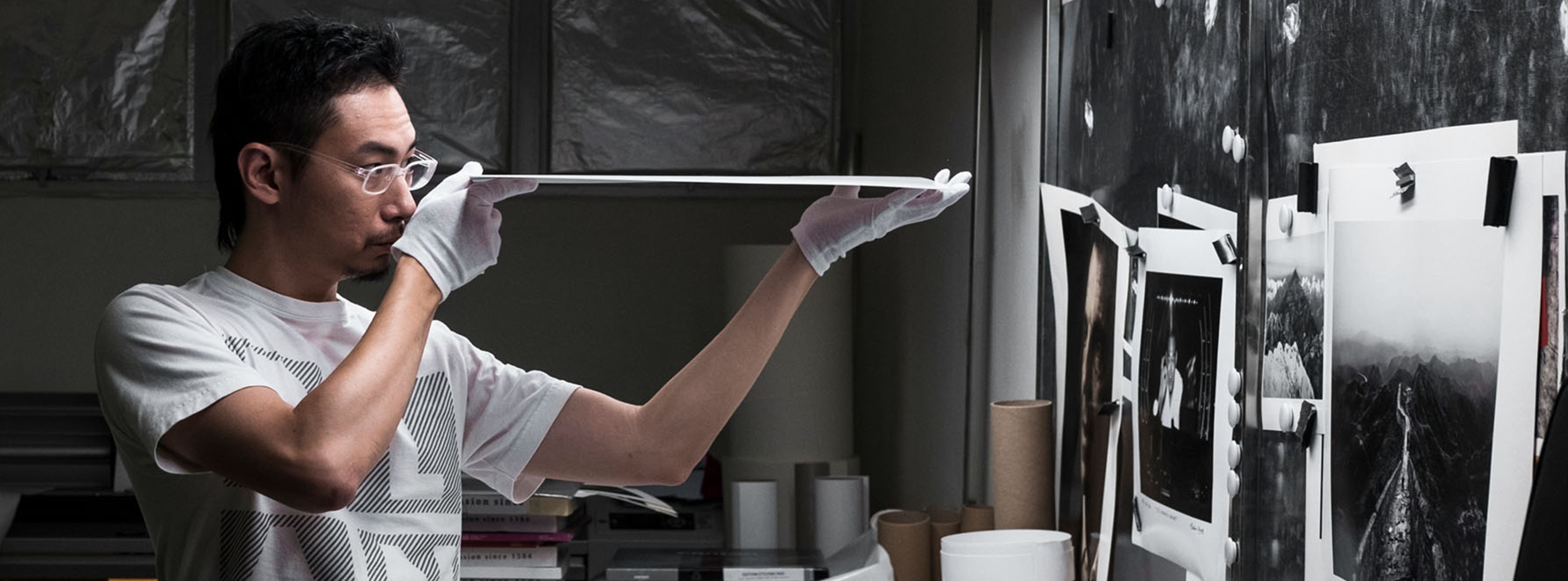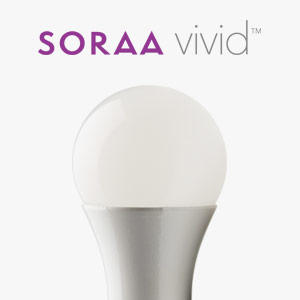I like this

Is a picture truly worth a mere thousand words? For master printmaker James Tan, an expertly crafted print signifies decades of learning, tireless ambition, and a solid understanding of color and light—notions words alone cannot convey.
Renowned photographers, artists and galleries turn to James for one-of-a-kind, high-quality fine art prints. Along with his advanced color management and lighting design knowledge, James also produces impactful photography exhibitions.
His passion for printmaking goes beyond the art of producing prints and photography exhibitions, however. James imparts his expertise by leading color management and printmaking workshops for professional and hobby photographers worldwide, in addition to teaching courses at the Nanyang Technological University in Singapore. James also provides consulting services for a number of printing companies and represents leading imaging equipment brands, such as Eizo, Canon, Wacom, X-rite, and Ilford.
He embodies what it takes to become a SORAA ‘Master of Color’ daily, whether taking photographs, creating prints, manipulating light sources, evaluating color or sharing his expertise. SORAA is pleased to collaborate with James Tan in telling his story of becoming a master printmaker, and now, a SORAA ‘Master of Color.’
An Evolving Approach to Color
James’ approach to color has changed since kicking off his career as a commercial photographer more than 17 years ago. A robust and scientific understanding of color, he found, equipped him with skills necessary to become a master printmaker.
“Back in the early 2000s, I thought color was pretty straightforward,” Tan said. “I take a picture, I edit it, and if I like what I’m seeing on the screen, that’s it. But as I progressed in my career, my mentor, along with detail-oriented clients, helped me broaden my horizon. They improved the commercial value of my work and made me a better craftsman overall. I went from a ‘button-pusher’ to a master of my craft that people would pay a premium for.”
Now, he evaluates his work by closely examining visual impact and color accuracy.
“Photographers aim, through the use of our creative sensibilities and scientific knowledge, to marry both ideals,” James said. “Good measuring equipment and knowledge can produce good color accuracy, but perfect color accuracy might not be what some clients need. Finding that sweet spot requires a good grasp in both faculties.”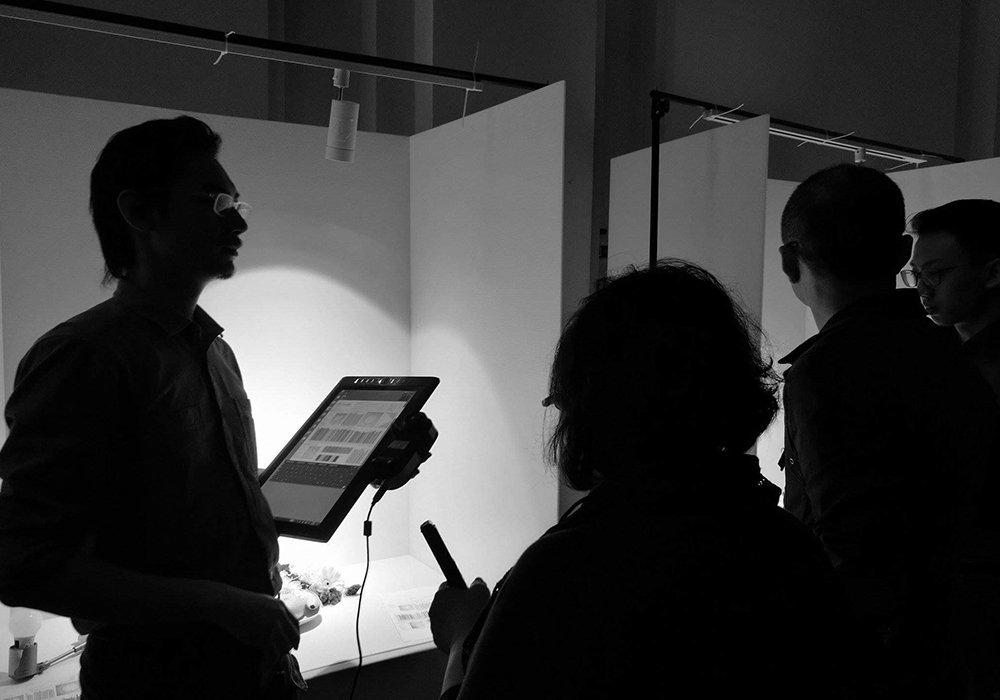
The master printmaker brings colors to life with his robust understanding of the color production gamut and metameric properties of the paper and ink used. An extremely accurate wide gamut monitor is critical as well to ensure proper editing, James noted.
“Back then, I had no idea that I was a pioneer in the realm of color,” James said. “It’s only in hindsight that I noticed I was lucky to start with the correct tools at the correct time and actually kept at it. When the International Color Consortium was formed and digital color profiles started showing up, there was a huge amount of misinformation floating around. It got better as the Internet improved and we had the ability to cross reference from more sources to sift out facts from fiction.
“Now, color management is becoming more recognized and gaining strong traction among photographers,” James continued. “And, lighting designers are also starting to use science and data more in their work, such as employing spectrophotometers and the newer TM-30 color rendition metrics.”
Enhancing Color and Visual Perception with the TM-30 Color Rendition Method
TM-30 contains a set of 99 color evaluation samples to more completely measure a light source’s ability to accurately render colors. This methodology is a more comprehensive measurement of color rendition compared to the conventional Color Rendering Index, or CRI, which is made up of eight core color evaluation samples.
An increasing number of lighting designers, specifiers and architects are evaluating light sources against TM-30 rather than CRI alone. While James does not fall into any of these professions, he learned everything he could about TM-30 to perfect his approach to photography, printmaking, and designing photography exhibitions.
“I use TM-30 measurements for lighting used in photography,” James said, “but it is important to note that photographers are trained to manipulate and balance light right from the start. It’s a good new tool, but not that crucial for photographers or printmakers just yet. But, it’s a brilliantly conceived concept and application which will go on to make the lives of lighting designers much better because it eliminates a lot guesswork about the spectral and color characteristic of luminaries way better than previous methods.”
James noted that most commercially trained photographers use flash strobes, which emit nearly perfect full spectrum light. Nonetheless, making photographs with TM-30 knowledge in mind when using continuous light sources like incandescent or LEDs can help photographers produce accurate images of objects where true color rendering is critical, such as products and food. Additionally, using a TM-30-equipped spectrophotometer can help photographers identify alternative light sources to accurately capture colors in photographs when preferred lighting options are not available.
Color Perception in a Digital Era
In a digital world where color perception is largely interpreted through computer and phone screens, what are the points of education you find most effective at championing true – rather than digitally perceived – color?
“First, I tend to establish the fact that a human’s color perception is very dynamic and our brain makes things up and tricks our mind into perceiving something not physically correct most of the time. In the aspect of accuracy, our eyes are often very inaccurate.
“Next, I establish the fact that most digital displays are not homogenized nor calibrated, thus they cannot be used to convey proper color information (example: a simulation of how different paint will look on a wall).
“Lastly, it is to educate on the importance of measuring instruments and measuring standards, because instruments do not get confused like our brain, and standards do not change.”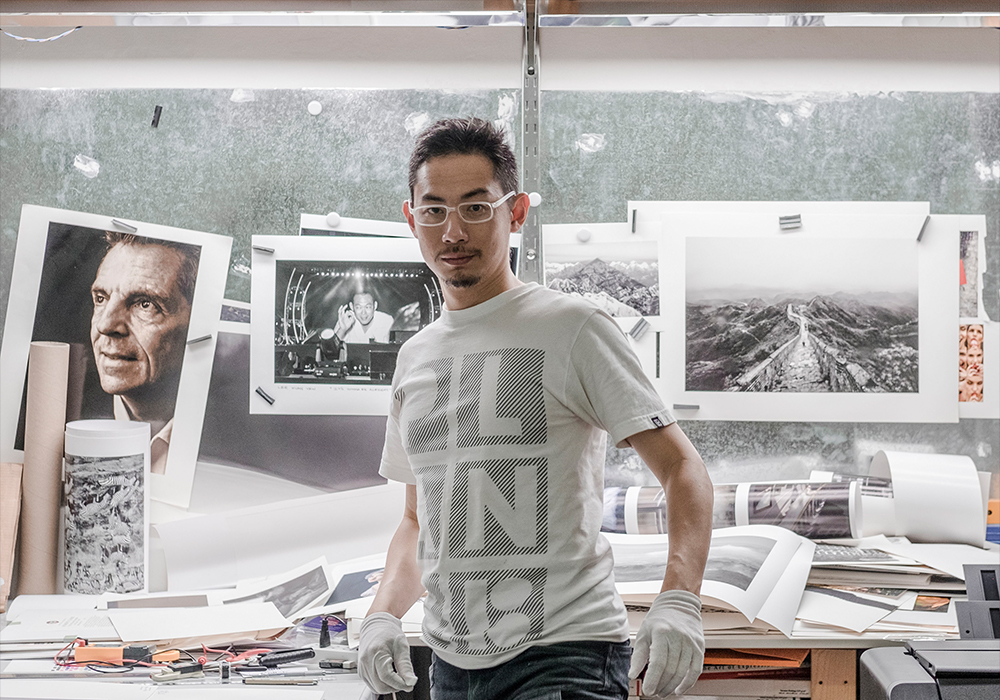
Perfecting Prints with Light
Immersing himself in the realms of light and color has helped James improve his work.
“I got involved with the lighting industry because at one point of my printmaking career, I progressed to being tasked to produce entire exhibitions,” James said. “I had to take control of every aspect, including both ambient and feature lighting.
“Although I’m not an actual lighting designer, the fundamentals are the same as our photographic lighting training,” James continued. “We use a wide range of lighting modifiers and techniques to achieve the desired effect on our subject matter in order for it to look three-dimensional or to project a desired effect.”
Before making prints, James uses SORAA lamps during the planning phase to simulate lighting effects on prints. This technique helps him determine the outcome he and his clients are hoping to achieve. Beyond the planning and production phases, James uses SORAA full spectrum LEDs to render colors as he intended when illuminating his work in exhibitions.
“Red is always important in almost all photographic work because human skin requires it, as well as a lot of different kinds of food and products,” James said. “Red is one of our primary color perceptions, so we are very sensitive to it.”
SORAA VIVID COLOR™ technology renders all colors, including red tones, unlike any other LED. As the only LED that spans the visible spectrum from violet through deep red, SORAA LEDs bring out the boldness of each color. As a result, colors are rendered as they are meant to be seen—a critical consideration when illuminating photographic prints.
“Regarding white rendering, we have to consider the existence of optical brightening agents in certain products like chinaware, paint, and even white apparels,” James said. “The movement toward LEDs have led to a deficiency in the violet part of the visible spectrum, which means many LEDs are unable to sufficiently excite brightening agents to produce the intended shade of white for those products. This makes them look more yellow than they should be.”
LEDs with SORAA NATURAL WHITE™ technology provide the perfect rendering of subtle white gradations with pure violet light—a proprietary LED feature unavailable anywhere else. With this technology, SORAA LEDs excite optical whitening agents James mentioned above. These technologies unleash the beauty in prints to not only improve color rendering accuracy, but accentuate and dramatize the viewing experience.
Becoming a Master Printmaker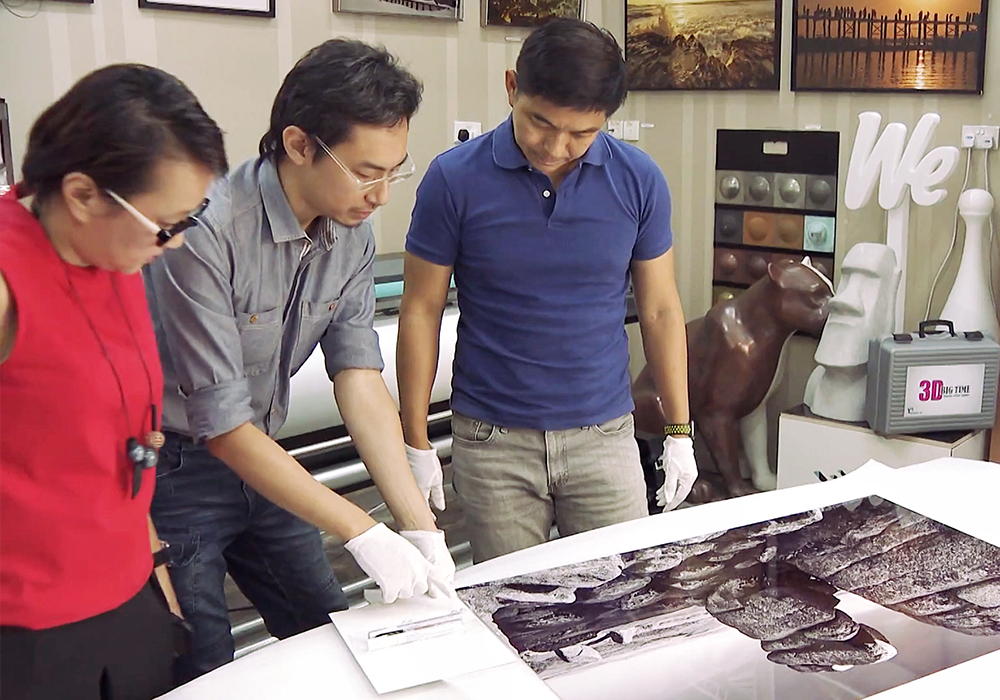
James was first introduced to the notion of printmaking in 1992, when he received the first edition of Photoshop, a high-resolution inkjet printer and a scanner. He taught himself how to use Photoshop to improve computer game graphics, as game data could be easily manipulated then, and experimented with inkjet printing and scanning to strengthen his understanding of computer graphics imaging.
Fast forward to 2001. Discovering an innate talent for photography, and realizing that people were willing to pay for his work, prompted him to pursue a career as a photographer. After two years of photographing weddings, James hungered for something more challenging and joined a commercial photography studio as an apprentice.
“My interest in the craft helped a lot, which allowed me to get quickly promoted to a full-fledged photographer over the course of three years,” James said. “During the latter part of my apprenticeship, I discovered I had better sensibilities in industrial and architectural photography. I shifted my focus to developing my skills in that area, as well as expanding my abilities with Photoshop as a digital imaging artist.”
“Throughout this phase as commercial photographer, I was trained to be very sensitive to light and lighting, because light is the fundamental tool that we use to create our images.”
An invitation to join the Master Photographer’s Association (MPA), an established international association of professional photographers based in the United Kingdom, spurred James’ transition from photographer to master printmaker. The association’s strong focus on accreditations and quality control around the art of image crafting, along with Qualification exams requiring the production of physical prints, reconnected James with his earlier printmaking and computer graphics imaging experiences. Albeit difficult, the MPA exams inspired him to pursue yet another career path: printmaking.
“I became fascinated with printmaking, because as photographers creating images, our goal is always to produce a physical print of some sort—be it on a small hard-proof for a magazine editorial or a billboard advertisement,” James said. “To get a good print requires an in-depth understanding of color theory, color management and the digital workflow.
“In 2007, I decided to dedicate ten years of my life to attempt to learn everything there is to know about this craft,” Tan continued. “The past 11 years as a printmaker has been absolutely amazing.”
Printmaking is an art in and of itself—an art requiring extreme meticulousness. Successfully realizing a photographer’s vision in tangible mediums requires expertise and utmost precision.
“As a printmaker, my job is to realize the full potential of an image in terms of impact, expression and communication for my clients,” James said. “Because I mostly deal with other people’s images, I seek to create prints that inspire the reaction my client wishes in the minds of viewers looking at the print.”
But embodying the emotions and experiences a photographer wishes to convey within another medium takes more than practice—it takes self-realization.
“You have to first establish the concept of an ideal print or picture, and strive for it with brutal honesty,” James said. “If a print does not meet expectations, destroy it and try again. I have destroyed countless prints in my career.”
Honing an Ever-Evolving Craft
While regarded as a master printmaker around the world, James still tends to his craft with unrelenting fervor.
“The word ‘master’ is daunting, but I find that the stress and challenge that follows it makes me improve because I’m constantly in realization that I’m not worthy of it,” James said. “The basic operating algorithm of a craftsman in any craft is the same: Never stop trying to improve, and never compromise by saying ‘it’s ok because clients don’t know.’ There is always something we can improve.”
